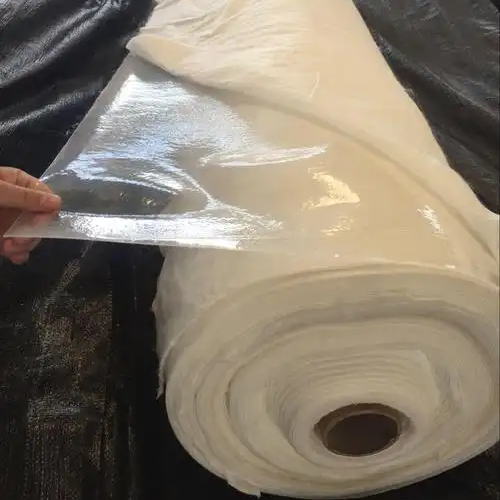Currently, China’s aquaculture industry primarily adopts a model centered on anti-seepage and conservation. Anti-seepage geomembranes have been utilized in the construction of lotus root ponds and for breeding eels, loaches, leeches, and other aquatic species. By employing anti-seepage membranes, the invasion of bacteria is effectively blocked, significantly reducing breeding risks while conserving water resources and enhancing economic benefits.
The primary role of geomembranes in fish ponds lies in preventing direct contact between fish and soil, thereby avoiding water contamination. These geomembranes not only prevent waste accumulation in the soil but also hinder the entry of harmful chemicals such as ammonia, hydrogen sulfide, acidic substances, iron, and other potentially detrimental compounds into the fish pond. This reduces the risk of diseases and effectively safeguards and promotes fish growth. Anti-seepage geomembranes for fish ponds provide a smooth and level surface, facilitating the easy removal of waste and simplifying the process of catching fish. They also protect the pond slopes from damage.
After hearing from fish and shrimp farmers, it becomes evident that anti-seepage geomembranes play a significant role in fish ponds!
Anti-seepage geomembranes for fish ponds are flexible waterproof barrier materials made from (medium) high-density polyethylene resin as the primary raw material, without any additional preservatives. These products boast a high anti-seepage coefficient (1×10^-17 cm/s) and can withstand application temperatures ranging from a high of 110°C to a low of -70°C. They are corrosion-resistant materials that can resist immersion in strong acids, alkalis, oils, and other substances. Additionally, they possess high tensile strength to meet the demands of high-standard engineering projects, exhibit strong aging resistance, and can maintain their original performance over extended periods. They are suitable for use in various harsh geological and climatic conditions.
The specifications of anti-seepage geomembranes for fish ponds typically have a width of 6 meters, with a wide range of types primarily differing in thickness, including 0.1mm, 0.2mm, 0.3mm, 0.4mm… up to 1.5mm, 2.0mm, 3.0mm, etc. Customized production based on customer requirements is also possible. Generally, a 0.5mm geomembrane is sufficient for fish ponds; however, thicker membranes offer better quality and longer service life. For newly excavated fish ponds or renovated old ponds, it is essential to ensure that the pond area exceeds 2 acres, with a water depth of over 2 meters. The pond should exhibit excellent water retention properties, with no seepage or leakage, abundant and unpolluted water sources, good water quality, and a sheltered location facing the sun. HDPE anti-seepage geomembranes should be selected for waterproofing and moisture-proofing treatments in fish ponds. The anti-seepage geomembranes for fishery breeding are made of polyethylene virgin resin, primarily composed of 97.5% high-density polyethylene and approximately 2.5% auxiliary materials such as carbon black, anti-aging agents, antioxidants, ultraviolet absorbers, and stabilizers. They are manufactured using a blow molding process, ensuring reliable product quality, stable production processes, uniform membrane thickness, and high membrane tensile strength, meeting standards and being environmentally friendly for outdoor use! The material is safe and eco-friendly, posing no harm to water quality while providing excellent anti-seepage properties. Based on these factors, an appropriate geomembrane specification should be selected. Generally, a 0.3mm or 0.4mm/㎡ anti-seepage geomembrane is suitable for fish pond anti-seepage, primarily depending on the water depth in the pond. In special regions, a 0.5mm/㎡ fish pond anti-seepage membrane can be chosen.


